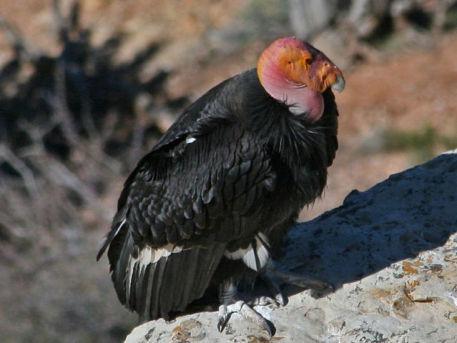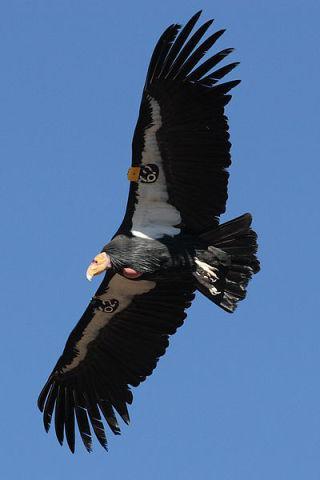The California condor population went into dramatic decline during the 20th
century due to poaching, lead poisoning, and habitat loss. In 1982 all of the remaining
22 wild condors were captured and taken to the San California Condor Diego Zoo Safari Park
and the Los Angeles Zoo for breeding. The number of birds began to rise and in 1991 they began to be reintroduced into the wild. As of last month there were 213 condors living in the wild. The survival of the species continues to be threatened due to lead poisoning.
California Condor Diego Zoo Safari Park
and the Los Angeles Zoo for breeding. The number of birds began to rise and in 1991 they began to be reintroduced into the wild. As of last month there were 213 condors living in the wild. The survival of the species continues to be threatened due to lead poisoning.
Condors are scavenging birds and eat carrion, i.e., animals that are already dead. This includes animals that have been shot and killed by hunters. As they eat the flesh they also ingest the lead shot or bullets that took the animal down in the first place.

Some hunting and environmental groups, in association with the California Department for Fish and Game, have worked toward a lead ban in condor habitats. However, lead bullets and shot are cheaper and more readily available than ammunition made of other materials, so ranchers and hunters still use them. There is little enforcement to back up the plan.
Without finding a solution to this problem, there will never again be a self-sustaining condor population in North America.
Sources: Sci-Tech.com, Science News

